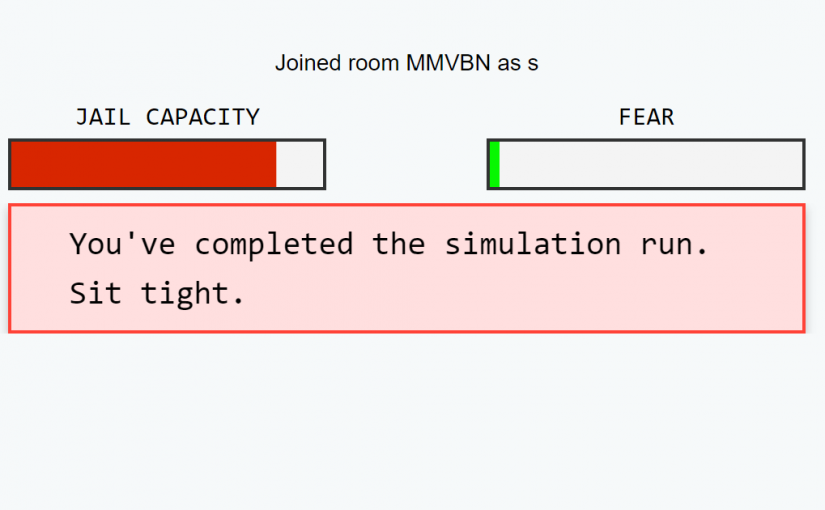First of all, I wanted to point out that this module included some of my favorite podcasts that I listen to regularly, so I really enjoyed that we were using it as learning material in class!
From the Reply All Podcast on The Crime Machine, the Compstat system was created with the original intention of “treating every crime seriously”, which quickly turned into a “management tool” as crime rates dropped throughout time. The shift in mindset upstream in the system very much so trickled downstream, the higher-ups were finding loopholes to jump through whereas the police doing the actual work were forced to adhere to quotas, and normal people are being profiled and given summons from police to fulfill the quotas. It seems like no one is benefitting from this crime detection system anymore.
It was one of the stories that left a strong impression on my mind, as at the time one of the “hot topics” in our Cognitive Systems courses was “biases in algorithms” in the realm of Artificial Intelligence and Machine Learning. If the data we are feeding algorithms is tainted with human biases (which will most likely be unavoidable), then algorithms will also learn our human biases, and reproduce them in their analysis results as well. This sentiment was echoed in the 99% Invisible Podcast, The Age of Algorithms.
Cathy O’Neil points out that many of these algorithms are used as “weapons of math destruction”, which act as proxies for profiling via race and class, often penalizing individuals for societal and systemic issue that they have little control over.
"Algorithms aren't very objective even when they are carried out by computers. This is relevant because the companies that build them like to market them as objective, claiming they remove human error and fallibility from complex decision making, but every algorithm reflects the priorities and judgements of its human designer" (The Age of the Algorithm, n.d.)
Use of algorithms are more ubiquitous than we think in our daily lives, from employee hiring assessments, to social media algorithms shaping the news on our feeds.
Currently, the Vancouver Art Gallery has an exhibition called “The Imitation Game”, which “surveys the extraordinary uses (and abuses) of artificial intelligence in the production of modern and contemporary visual culture across disciplines around the world”
(Sidenote: this was a very fun and engaging exhibition for me – a COGS student- since this encompasses almost EVERYTHING I learned in my undergrad, so I am VERY BIASED. It is also a great introduction to those who are not familiar with these subject matters, so please go take a look and see for yourself!)
One thing I really liked about the curation is that they showed what AI could be used for in everyday application, but at the same time, pointed out the “dark side” of such applications. One exhibit from Algorithmic Justice League (AJL) questions the implication of facial recognition software that refused to recognize faces of people of color. The AJL advocates for “equitable and accountable AI, to offer agency and control for people that interact with AI, and transparency and redress for harm caused in the use of AI.”
Reflections
When I was going through the Detain/Release tasks, the first few things I tend to look at was:
-
- Type of committed crime : if they tend to be more violent (unlawful use of weapon, assault, etc.) then I usually detain them than crimes that are “less” violent (fraud, drug possession, etc.)
- Violence: whether or not they will pose a threat to public if I release them
- Statement from prosecution: I feel like this adds weight to the decision making process for me, as I am more likely to go with what the Prosecution Team also thinks in some ways
Factors that I didn’t consider as much in my decisions included:
-
- Statement from Defendant
- Name
- Age
- Gender
- Photo
Usually cases that I release have:
-
- Low levels of Failure to Appear
- Low levels of Commit a Crime
- Low levels of Violence
As long as Violence and Fail to Appear are low, I usually release them.
If their Commit a Crime is not low, then I check the type of crime they committed before deciding to detain or release.
I tried running the simulation 3 different times, with varying results in Jail Capacity and Fear.
The first time, I had a 40% Jail Capacity, and little Fear.
**Edit: I was able to get hold of my statistics afterwards, and have included them below in the textboxes with the actual percentage. As you can see, my guestimation is very not accurate to the actual data.**
Defendants processed: 25 Detained: 17 Released: 8 Violators: 3 Jail: 75% Fear: 8%
The second time, I had 60% Jail Capacity, with 50% Fear.
(I think I was more lenient with my release criteria this time)
Defendants processed: 25 Detained: 13 Released: 12 Violators: 5 Jail:60% Fear: 43%
The third time, I had 80% Jail Capacity and little Fear.
Defendants processed: 25 Detained: 13 Released: 12 Violators: 5 Jail: 65% Fear: 62%
I wasn’t able to access the actual statistics for the simulation, so I am curious what the data can reveal about my judgements and assumptions in the process. Though I think I am aware of the biases that I subconsciously project onto my decisions, I wonder if showing the data and statistics of my performance and further inform me on the underlying prejudices that I carry when it comes to making detain or release decisions. By making it transparent and bringing it to the forefront of my awareness, I think it will impact my decision making processes moving forward.
References
Algorithmic Justice League – The Imitation Game. (n.d.). Retrieved July 25, 2022, from https://imitationgameexhibition.ca/15-Algorithmic-Justice-League
The Age of the Algorithm. (n.d.). In 99 Percent Invisible. Retrieved from https://99percentinvisible.org/episode/the-age-of-the-algorithm/
The imitation game: Visual culture in the age of Artificial Intelligence. Vancouver Art Gallery. (n.d.). Retrieved July 25, 2022, from https://www.vanartgallery.bc.ca/exhibitions/the-imitation-game
Vogt, P. (n.d.-a). The Crime Machine, Part I. In Reply All.
Vogt, P. (n.d.-b). The Crime Machine, Part II. In Reply All.

